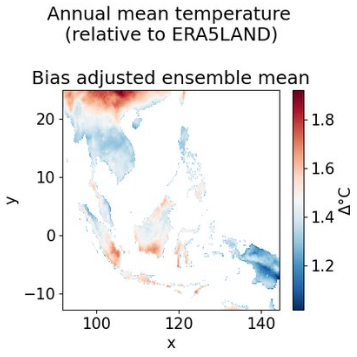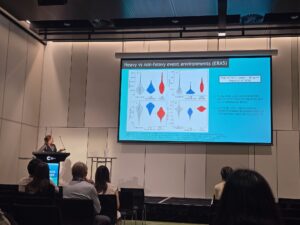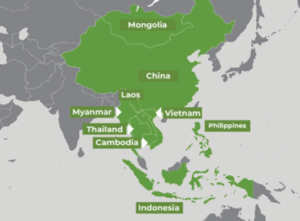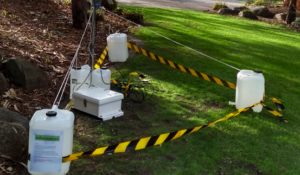
Climate Futures team members Dr Kathleen Beyer and Dr Ben Weeding have been working on a project funded by the Australian Centre for International Agricultural Research to build capacity in Indonesia on climate modelling for biosecurity risk. The project aims to understand the gaps in biosecurity risks in Southeast Asia due to climate change, providing insights into the influence of climate change on the distribution of biosecurity threats and emerging plant diseases. It will also evaluate the impacts of climate change on forest pests and pathogens in SE Asia and aims to improve information to support policy development and capacity building.

The project has established a partnership between Climate Futures research group and the Center for Climate Risk and Opportunity Management Institut Pertanian Bogor (IPB University) which has developed a species distribution modelling toolbox and produced and evaluated a range of statistically downscaled and bias corrected climate projections to use for the SE Asia region. The project has also developed a website to enable access to the results from the project. Importantly the project has worked towards developing capacity in climate and species distribution modelling among CCROM scientists including women.
The project has found that climate data sources commonly used in species distribution modelling are too spatially coarse to be effective for the varied geography of SE Asia. Downscaling and bias correction of climate models are vital for effective species distribution modelling in such geographically varied environments. Preliminary results suggest that for average near future conditions (2031-2050), changes to occurrence probabilities for Leptocybe invasa (the European gall wasp) are relatively small but geographically varied. Efforts have focused on L. invasa as it is an internationally significant and devastating pest species for which sufficient data was available in SE Asia.
Policy considerations from the project include that operational guidelines aimed at increasing the accessibility of publicly available pest species presence data – eg: location details – would enable more effective modelling and consequently better preparation for future pest species challenges. Species distribution modelling reinforces the need for pest species policies to be based on locally relevant data. Policies encouraging the public availability of meteorological station data would improve bias correction reliability and consequently species distribution modelling. The project has also concluded that dedicated investment in pest species and climate research will create better outcomes and decision-making in biosecurity management across SE Asia.








